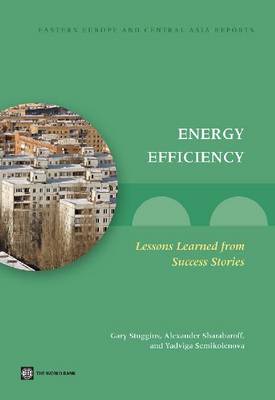Eastern Europe and Central Asia Reports
1 total work
Energy Efficiency
by Gary Stuggins, Alexander Sharabaroff, and Yadviga Semikolenova
Published 15 January 2013
Upon reviewing the evolution of the energy intensity of countries in Europe and the Former Soviet Union, a number of interesting trends became apparent: high energy intensity countries have reached the level of medium energy intensity economies 15 years earlier; medium energy intensity had similarly evolved to levels of low energy intensity economies in the same period. Furthermore, the fast transitioning economies of Central Europe were converging towards similar levels of energy intensities, particularly those adopting EU Directives. And successful EU-15 countries had managed to maintain economic growth while keeping energy use flat.
This title looks at how countries make the transition from high to medium to low energy intensity. It explores whether or not leapfrogging is possible and what policies are particularly helpful. A few lessons that were learned: energy prices tend to evolve from subsidised levels to full cost recovery to full cost recovery plus environmental externalities. Industrial energy efficiency tended to be the starting point, with privatisation and competition driving companies to reduce their cost of production, including energy. Successful countries excelled at Governance: setting targets; building institutional capacity; creating and improving the legal and regulatory framework; and monitoring and evaluation. Households tended to be the last, and most difficult, area of reform, starting with pricing improvements, outreach campaigns, financing programmes and moving to building certificates programmes.
This title looks at how countries make the transition from high to medium to low energy intensity. It explores whether or not leapfrogging is possible and what policies are particularly helpful. A few lessons that were learned: energy prices tend to evolve from subsidised levels to full cost recovery to full cost recovery plus environmental externalities. Industrial energy efficiency tended to be the starting point, with privatisation and competition driving companies to reduce their cost of production, including energy. Successful countries excelled at Governance: setting targets; building institutional capacity; creating and improving the legal and regulatory framework; and monitoring and evaluation. Households tended to be the last, and most difficult, area of reform, starting with pricing improvements, outreach campaigns, financing programmes and moving to building certificates programmes.
